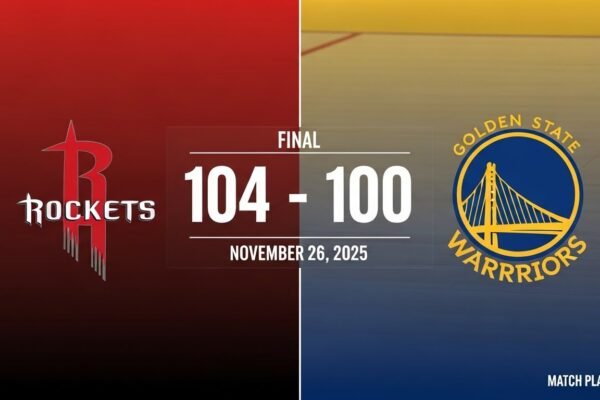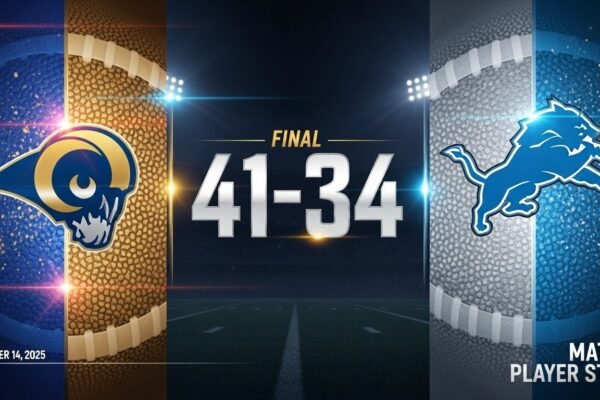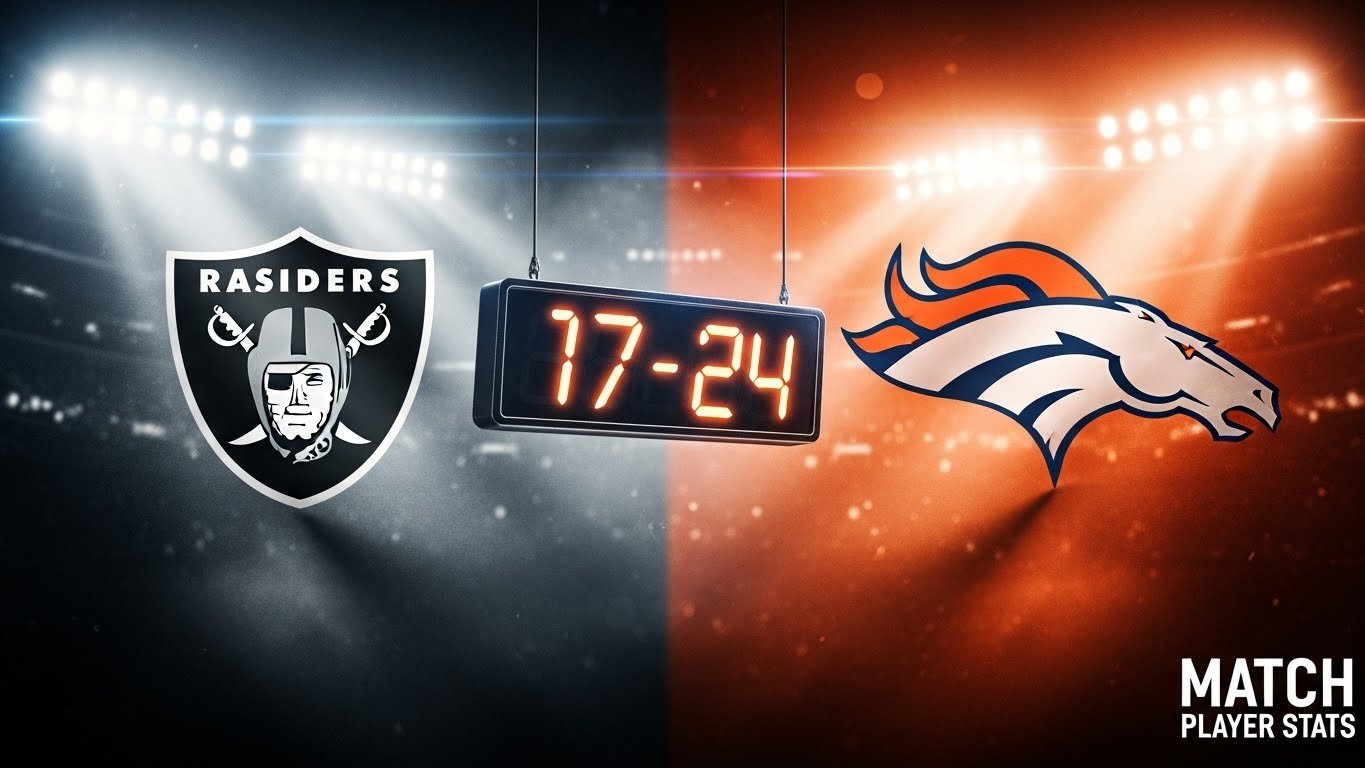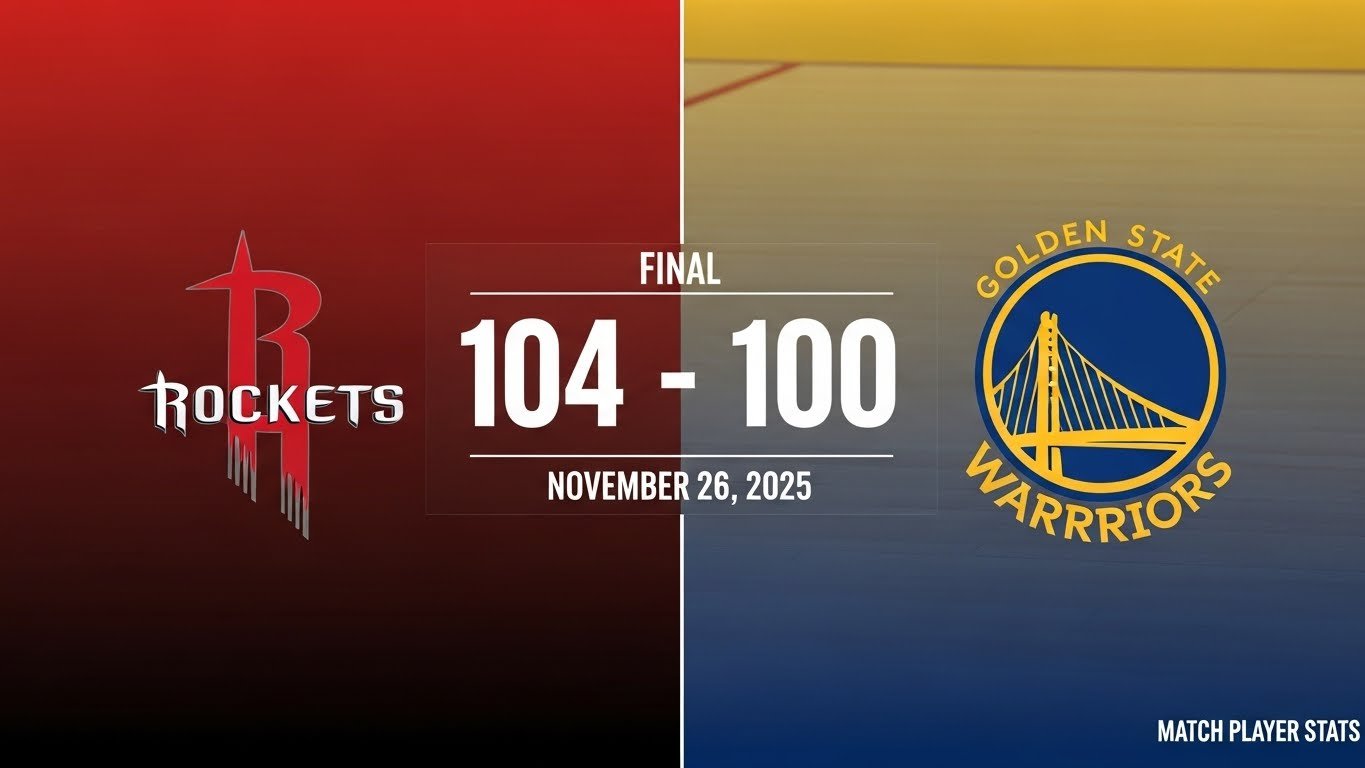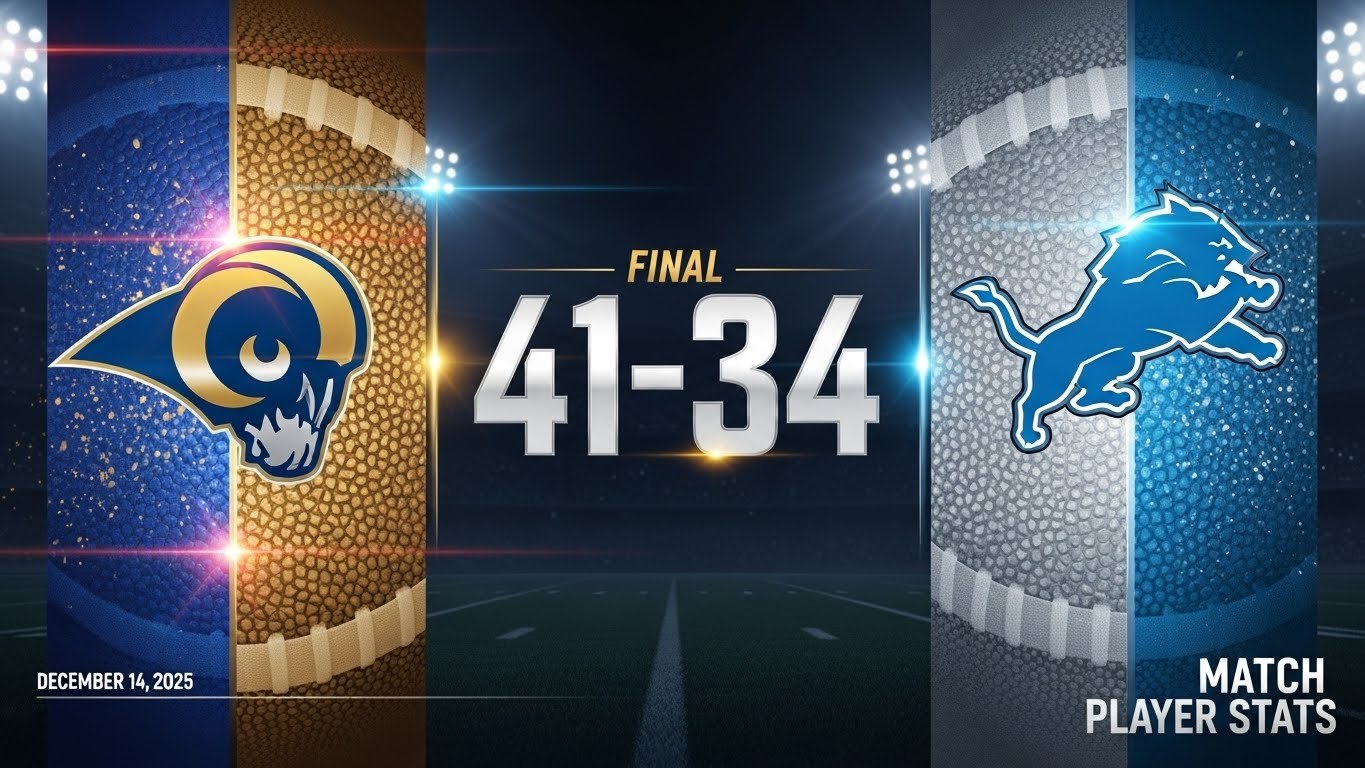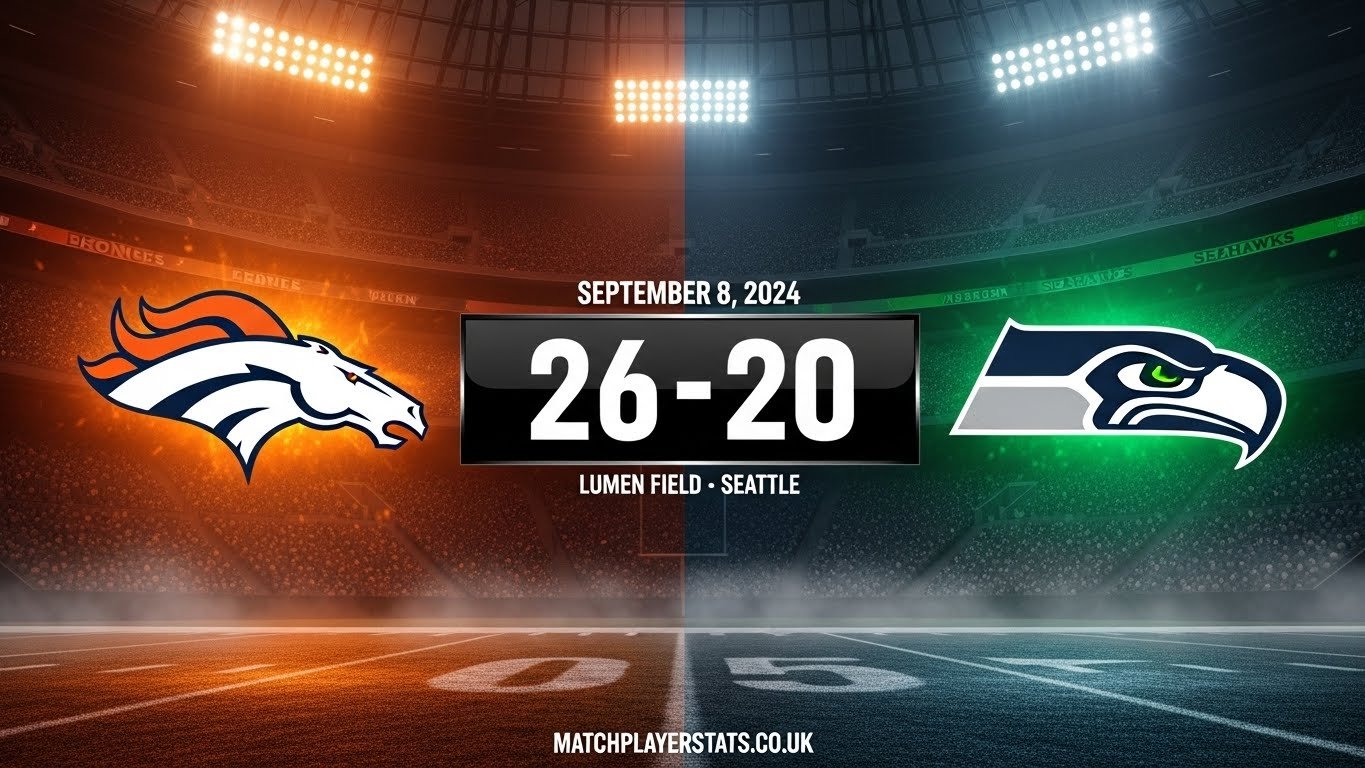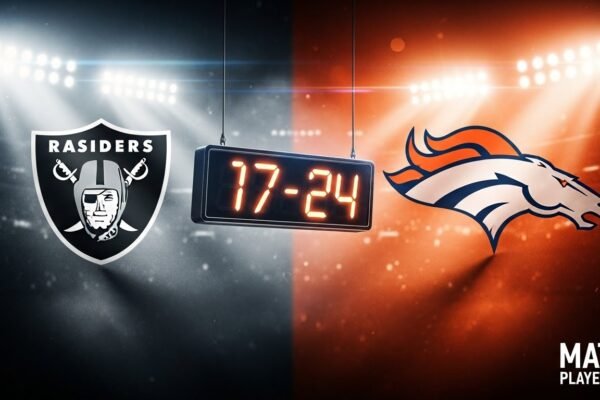
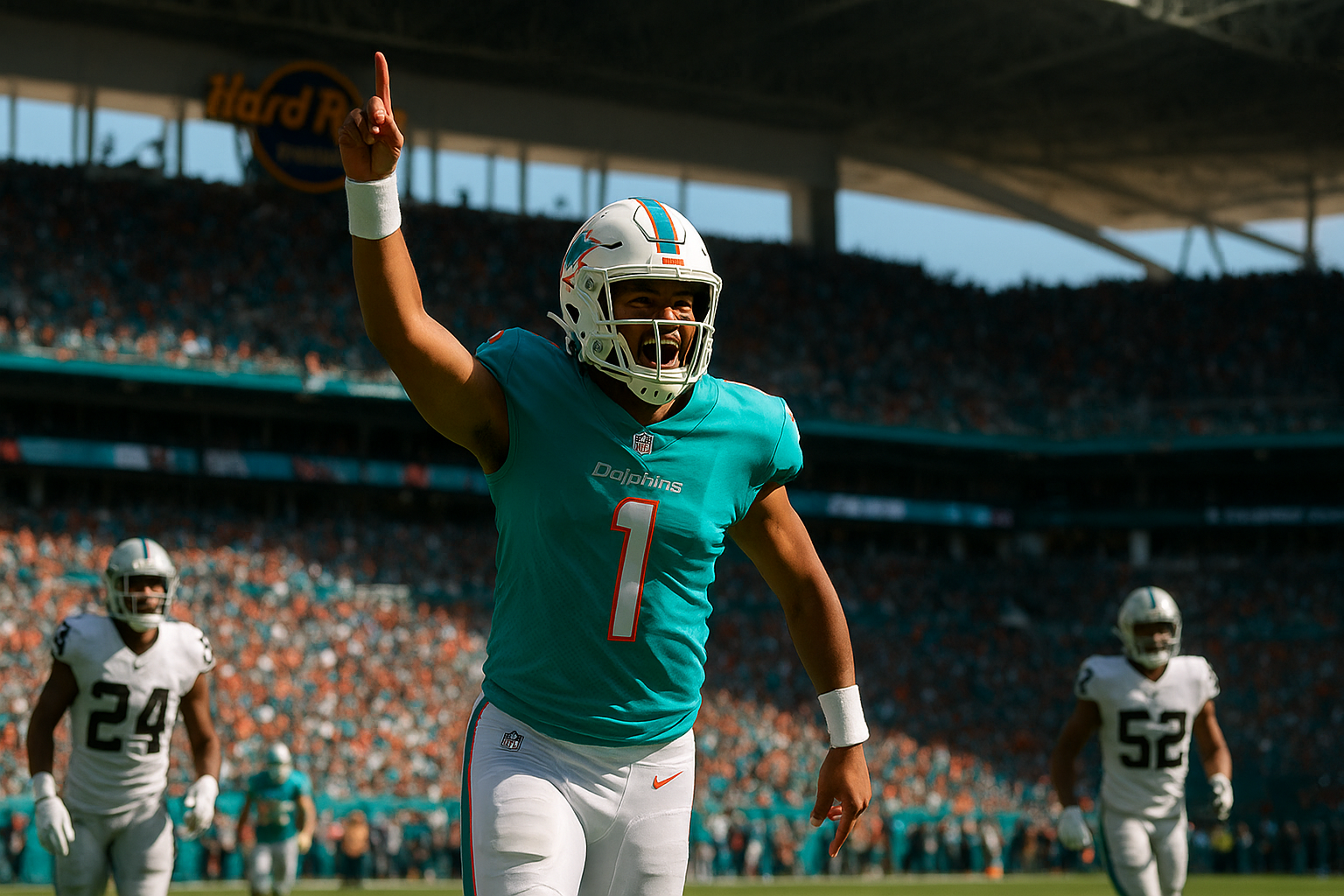
Las Vegas Raiders vs Miami Dolphins Match Player Stats (Nov 17, 2024)
Miami never punted Sunday afternoon, November 17, at Hard Rock Stadium. The Dolphins scored on six of seven possessions while committing zero turnovers, defeating Las Vegas 34-19 in front of 65,440 fans. Miami moved to 4-6 with their second straight win. The Raiders fell to 2-8 despite a record-breaking performance from rookie tight end Brock Bowers.
Table of Contents
Quick Stats: Game At A Glance
| Category | Raiders | Dolphins |
|---|---|---|
| Final Score | 19 | 34 |
| QB Performance | Minshew: 30/43, 282 yds, 2 TD, 1 INT | Tua: 28/36, 288 yds, 3 TD, 0 INT |
| Top Receiver | Bowers: 13 rec, 126 yds (NFL rookie TE record) | Smith: 6 rec, 101 yds, 2 TDs |
| Leading Rusher | Meyers: 1 rush, 20 yds | Achane: 17-73, 1 TD |
| Defense Leader | Spillane: 11 tackles | Brooks: 13 tackles |
| Turnovers | 1 (Minshew INT) | 0 |
| Red Zone TDs | 1 of 3 (33%) | 3 of 4 (75%) |
| Time of Possession | 26:48 | 33:12 |
The Game-Sealing Sequence
Two plays in a four-minute span ended Las Vegas’ comeback hopes in the fourth quarter.
Trailing 24-19 with 4:23 remaining, the Raiders needed a stop. Instead, safety Isaiah Pola-Mao bit on play action while linebacker Robert Spillane followed the running back out of the backfield. Jonnu Smith ran through the vacated middle of the field with no defender within 15 yards, catching Tua Tagovailoa’s pass for a 57-yard touchdown.
“The red seas parted,” Smith said. “It was a busted coverage. Tua, me and him locked eyes and made the rest happen.”
According to PFF’s Week 11 analysis, Pola-Mao recorded his worst-graded game of the season, with the blown coverage being the primary culprit.
Three plays later, Gardner Minshew forced a pass into Jalen Ramsey’s coverage despite the veteran cornerback jumping the route from the snap. Ramsey intercepted at Miami’s 38, ending the threat. That marked Minshew’s 13th turnover in 10 games this season and his seventh game with at least one interception.
“We just have to keep executing and strain a little bit more,” Raiders coach Antonio Pierce said. “We had opportunities. Brock had a big day. I thought Gardner got rid of the ball quickly in the passing game. Opportunities there for shots, but we didn’t get them down there again.”
Team Stats
| Category | Raiders | Dolphins |
|---|---|---|
| Total Yards | 328 | 353 |
| First Downs | 22 | 25 |
| Rushing (Att-Yds) | 16-60 | 26-82 |
| Third Down | 8/14 (57.1%) | 8/12 (66.7%) |
| Penalties-Yards | 7-49 | 4-23 |
Quarterback Performances
Tagovailoa completed 28 of 36 for 288 yards, three touchdowns, and zero interceptions against a Raiders defense ranking 25th in pass defense (272 yards per game allowed). His 127.8 passer rating sat 33.5 points above his season average of 94.3. His eight yards per attempt represented a full 1.2-yard improvement over his season norm of 6.8.
Pressured on eight dropbacks, he completed five for 101 yards and two scores. That 62.5% completion rate under duress compared to his season average of 58.1% in similar situations. His 24-yard completion to Jaylen Waddle came on a play where he rolled left under pressure and delivered accurately to keep a scoring drive alive.
“We’ve got good enough players to where if we get them the ball in space, we like our chances,” head coach Mike McDaniel said.
Minshew finished 30 of 43 for 282 yards, two touchdowns, and the fatal interception. His 93.4 rating looks acceptable until contextualized: he forced a pass into tight coverage with three minutes left, trailing by five points. He averaged 6.6 yards per attempt and was sacked three times for 14 yards in losses.
Under interim coordinator Scott Turner, the Raiders showed improved tempo. Minshew’s average time to throw dropped to 2.4 seconds compared to his season mark of 2.7, yet Miami’s pressure still disrupted timing throughout.
QB Comparison
| Stat | Minshew | Tagovailoa |
|---|---|---|
| Comp/Att | 30/43 (69.8%) | 28/36 (77.8%) |
| Yards | 282 | 288 |
| Yards Per Attempt | 6.6 | 8.0 |
| TD/INT | 2/1 | 3/0 |
| Rating | 93.4 | 127.8 |
| Sacks-Yards Lost | 3-14 | 2-17 |
Receiving: Where Stars Disappeared and Records Emerged
Bowers set an NFL record with 13 receptions on 16 targets for 126 yards and a touchdown, breaking Keith Jackson’s 1988 rookie tight end mark of 12 catches. His 13 receptions represented 43% of Las Vegas’ total catches, while his 126 yards accounted for 45% of the team’s passing output.
“We’re down, man, but I tell you I’ve been on teams where you send it in,” Minshew said. “But we’re not doing that. We practice hard. Everybody’s doing the right things. We haven’t been getting the results. We’ve been a play short, but I feel if we continue our process and continue to try to get better it’s going to break for us.”
His 23-yard touchdown came on a swing pass where he broke Poyer’s tackle attempt in space. Bowers now has 70 catches through 10 games, putting him on pace for 119 receptions, which would shatter Mike Ditka’s rookie tight end record of 56 (1961) by 63 catches.
No other Raiders receiver caught more than four passes or gained more than 50 yards. Jakobi Meyers caught four for 28 yards (7.0 average), while DJ Turner and Tre Tucker each had three catches for under 30 yards. When one player accounts for 43% of receptions, defenses can bracket him late knowing others can’t exploit single coverage.
Smith caught six passes on eight targets for 101 yards and two touchdowns. His one-yard score on fourth-and-goal gave Miami a 7-0 lead on McDaniel’s aggressive opening drive. The 57-yarder came when Las Vegas’ entire secondary lost track of assignments, leaving him alone deep middle.
Smith entered averaging 46 yards per game and more than doubled that output. He ranks third among NFL tight ends in yards per reception at 14.2 this season.
Tyreek Hill caught seven passes for 61 yards and a touchdown on eight targets—modest production by his explosive standards but perfectly aligned with Miami’s methodical game plan. With the Dolphins controlling tempo and spreading targets across seven different receivers, Hill functioned more as a possession weapon than a vertical threat. His touchdown came in the third quarter, but the conservative approach meant Miami never felt urgency to feature him in the deep passing game that typically produces his 100-yard explosions. For fantasy managers expecting his usual fireworks, this was a quiet afternoon that matched the team’s ball-control philosophy.
Jaylen Waddle’s two catches for 37 yards on three targets reflected Miami’s spread-the-wealth approach rather than any defensive lockdown. In a game where the Dolphins never trailed after the first quarter, there was no need to force-feed their speed weapons. The 24-yard catch under pressure kept a scoring drive alive, but with Smith, Hill, and the running game all producing efficiently, Waddle’s limited usage made tactical sense. Still, just three targets for one of Miami’s primary weapons suggests the Raiders’ game plan focused on containing the perimeter, even if it opened up the middle for Smith’s monster day.
Top Receivers
| Player | Team | Rec | Tgt | Yards | Avg | TD | Long |
|---|---|---|---|---|---|---|---|
| Brock Bowers | LV | 13 | 16 | 126 | 9.7 | 1 | 23 |
| Jonnu Smith | MIA | 6 | 8 | 101 | 16.8 | 2 | 57 |
| Tyreek Hill | MIA | 7 | 8 | 61 | 8.7 | 1 | 18 |
| Alexander Mattison | LV | 3 | 3 | 50 | 16.7 | 0 | 31 |
| Jaylen Waddle | MIA | 2 | 3 | 37 | 18.5 | 0 | 24 |
| De’Von Achane | MIA | 4 | 4 | 32 | 8.0 | 0 | 17 |
Ground Game: Dominance vs. Desperation
De’Von Achane carried 17 times for 73 yards and a touchdown while adding four catches for 32 yards. His two-yard score with 10:37 left extended Miami’s lead to 24-12, forcing Las Vegas into obvious passing situations where their non-existent running game became irrelevant.
His 30-yard burst in the third quarter came on outside zone. He hit the cutback lane as the defensive end crashed down, reaching the second level before anyone could react. The run set up first-and-goal at the eight, leading to Hill’s touchdown.
Raheem Mostert exited in the second quarter with a hip injury after three carries for minus-two yards, forcing Miami to lean heavily on Achane. Jaylen Wright spelled him with five carries for four yards.
Las Vegas managed 60 yards on 16 carries. Wide receiver Meyers led all rushers on a designed sweep for 20 yards. Running backs Mattison and White combined for 28 yards on 10 attempts (2.8 average). According to Pro Football Network’s analysis, no Raiders starting offensive lineman earned a run-blocking grade above 67.4.
The Raiders entered this game ranking 29th in rushing yards per game at 82.4. They finished with 60 yards, their third-worst output of the season.
Rushing Stats
| Player | Team | Att | Yards | Avg | TD | Long |
|---|---|---|---|---|---|---|
| De’Von Achane | MIA | 17 | 73 | 4.3 | 1 | 30 |
| Jakobi Meyers | LV | 1 | 20 | 20.0 | 0 | 20 |
| Alexander Mattison | LV | 5 | 19 | 3.8 | 0 | 8 |
| Zamir White | LV | 5 | 9 | 1.8 | 0 | 3 |
Defense: Goal-Line Stand and Game-Sealing Pick
Jordyn Brooks led Miami with 13 tackles (8 solo, 5 assisted). His biggest sequence came on a second-quarter goal-line stand when Las Vegas reached first-and-goal from the three. Brooks filled the A-gap on three consecutive plays, forcing the Raiders to settle for a field goal. Those four points proved crucial.
Anthony Walker Jr. patrolled the middle with 10 tackles (6 solo, 4 assisted), consistently filling gaps in Miami’s run defense. Jalen Ramsey finished with five solo tackles, two pass deflections, and the fourth-quarter interception that ended Las Vegas’ comeback hopes.
Miami’s pass rush generated three sacks from Zach Sieler, Calais Campbell, and Emmanuel Ogbah. Rookie Chop Robinson had his best performance, recording six quarterback hurries and posting a 20% pressure rate on 25 pass-rush snaps according to PFF.
Storm Duck played 36 snaps (55% of defensive plays) with Kendall Fuller out. The backup cornerback recorded four tackles and two assists while holding up in coverage.
Robert Spillane led Las Vegas with 11 tackles but was part of the coverage breakdown on Smith’s 57-yarder. Maxx Crosby finished with five tackles but no sacks or quarterback hits as Miami’s offensive line neutralized him.
Adam Butler and Tyree Wilson each recorded one sack for the Raiders. Las Vegas failed to force a punt or generate a takeaway until the game was decided.
Defensive Leaders
| Player | Team | Tkl | Solo | Ast | Sacks | TFL | INT | PD |
|---|---|---|---|---|---|---|---|---|
| Jordyn Brooks | MIA | 13 | 8 | 5 | 0 | 1 | 0 | 0 |
| Robert Spillane | LV | 11 | 5 | 6 | 0 | 0 | 0 | 0 |
| Anthony Walker Jr. | MIA | 10 | 6 | 4 | 0 | 0 | 0 | 0 |
| Jalen Ramsey | MIA | 5 | 5 | 0 | 0 | 0 | 1 | 2 |
Special Teams: The Untold Dominance
Miami never punted—the ultimate measure of offensive efficiency. Every drive either scored or ended on downs, a testament to their execution and Las Vegas’ inability to force three-and-outs.
The Raiders punted multiple times despite having AJ Cole, one of the league’s premier punters. His attempts couldn’t flip field position against Miami’s methodical drives that consistently gained first downs and controlled the clock.
Both kickers performed flawlessly on their opportunities. Miami converted all extra points (4-for-4) and field goal attempts. Las Vegas made their lone field goal on the goal-line stand sequence and all extra points (2-for-2), but leaving eight points on the field with two red zone failures proved fatal.
Hidden Factors: Penalties and Possession
The Raiders’ seven penalties for 49 yards disrupted any rhythm Las Vegas tried to establish. Two false starts on third-and-manageable situations killed drives in the first half. A holding penalty on Alexander Mattison’s 12-yard run brought back the Raiders’ longest gain from scrimmage.
Miami’s discipline allowed them to execute clean drives without self-inflicted setbacks, committing just four penalties for 23 yards. In a game where Las Vegas needed perfect execution to overcome talent deficits, the 26-yard penalty disparity proved fatal.
The Dolphins dominated time of possession 33:12 to 26:48, nearly a seven-minute advantage that accomplished two objectives: wore down a Raiders defense that couldn’t generate consistent stops, and limited Minshew’s opportunities to orchestrate comebacks. Miami’s methodical approach meant fewer possessions for both teams (seven drives each), turning the game into a battle of efficiency where the Dolphins’ mistake-free football overwhelmed Las Vegas’ self-inflicted wounds.
Red Zone Efficiency: The Critical Gap
Miami converted three of four red zone trips into touchdowns (75%) while Las Vegas managed one of three (33%). The league average is 58%, making Miami 17 percentage points above and Las Vegas 25 points below the norm.
The Raiders’ two field goals from inside the 10-yard line represented eight points left on the field. The first followed a 12-play drive that reached first-and-goal from the nine but stalled after gaining eight yards on three plays. The second came after a 16-play march to first-and-goal from the eight that gained only four yards on three attempts.
Miami converted 8 of 12 third downs (66.7%) compared to Las Vegas converting 8 of 14 (57.1%). The Dolphins faced an average distance of 6.4 yards while the Raiders averaged 7.8 yards to go, showing Miami stayed ahead of the chains throughout.
Red Zone Performance
| Team | Attempts | TDs | TD % | vs League Avg |
|---|---|---|---|---|
| Miami | 4 | 3 | 75.0% | +17.0% |
| Las Vegas | 3 | 1 | 33.3% | -24.7% |
Both teams converted both fourth-down attempts. Miami’s came on scoring drives; Las Vegas’ extended drives that ended in field goals.
Looking Forward
Miami improved to 4-6, entering Week 12 with playoff odds at 22.9% according to projection models. They host New England next week. A win would move them to 5-6, but they need at least five wins in their final seven games plus help from other AFC contenders.
“I don’t know about you guys, but winning feels a lot better than losing,” McDaniel said. “So I think we’re going to keep trying to do that.”
This marked Miami’s second straight win using extended drives and time control rather than explosive plays. The approach mirrors their earlier victory over Los Angeles, suggesting they’ve found an identity that works when Tagovailoa executes without turnovers.
Las Vegas fell to 2-8 with their sixth straight loss. The Raiders will likely secure a top-five draft pick, positioning them to select a franchise quarterback or elite offensive tackle. Their struggles echo their earlier defeat to Cincinnati, where offensive predictability and defensive breakdowns led to another loss.
Pierce fired offensive coordinator Luke Getsy during the bye week, hoping new leadership would spark improvement. The results remain minimal despite better tempo and communication.
Bowers’ 70 catches through 10 games already set a franchise record for tight end receptions in a season. If Las Vegas finds a franchise quarterback and improves their offensive line, Bowers provides an elite weapon to build around.
The all-time series now favors Miami 20-18-1. The Dolphins have won three of the last four meetings, including both games at Hard Rock Stadium since 2023.
Bottom Line
Miami’s zero turnovers contrasted with Minshew’s fourth-quarter interception. Their 75% red zone touchdown rate crushed Las Vegas’ 33%, leaving eight points on the field for the Raiders. The Dolphins dominated time of possession by nearly seven minutes, wearing down a defense that couldn’t force a punt or generate a takeaway until garbage time.
Tagovailoa’s 127.8 rating came against a defense ranking 25th in pass defense. He took what the Raiders gave him, completed 62.5% under pressure, and managed the game Miami needed. His improvement when plays broke down nearly doubled his season numbers in similar situations.
Bowers’ record-setting performance couldn’t overcome Las Vegas’ inability to run the ball (60 yards on 16 carries) or finish drives. When your tight end accounts for 43% of receptions and 45% of passing yards and you still lose by 15, roster deficiencies run too deep for individual brilliance to overcome.
Miami’s methodical, mistake-free approach works against mediocre opponents. The Dolphins control the clock, limit possessions, and let Tagovailoa exploit soft defenses. Against the Raiders, it kept playoff hopes alive for another week.

